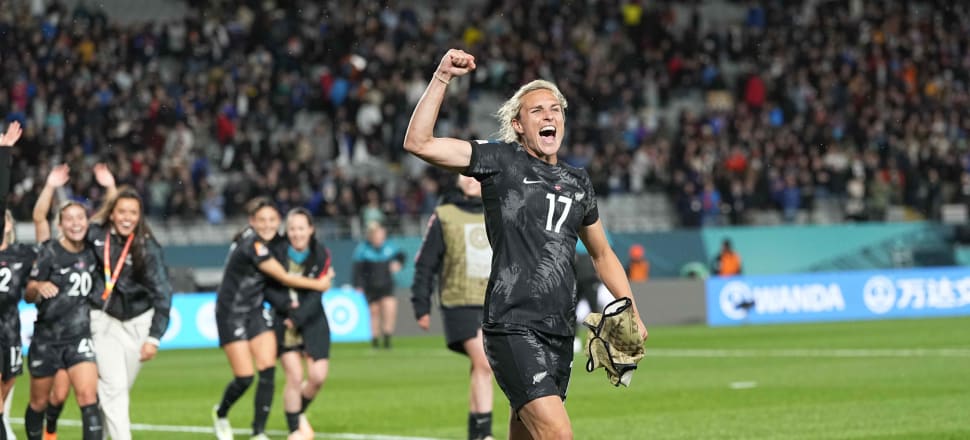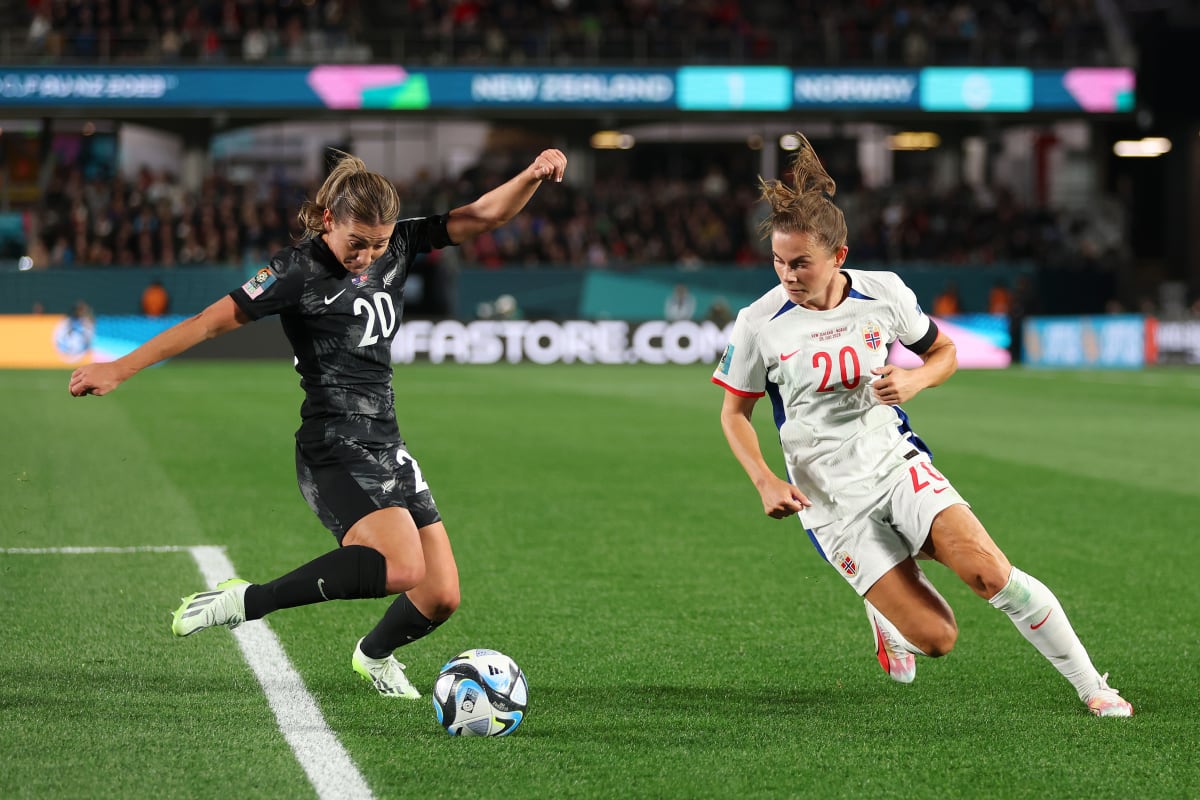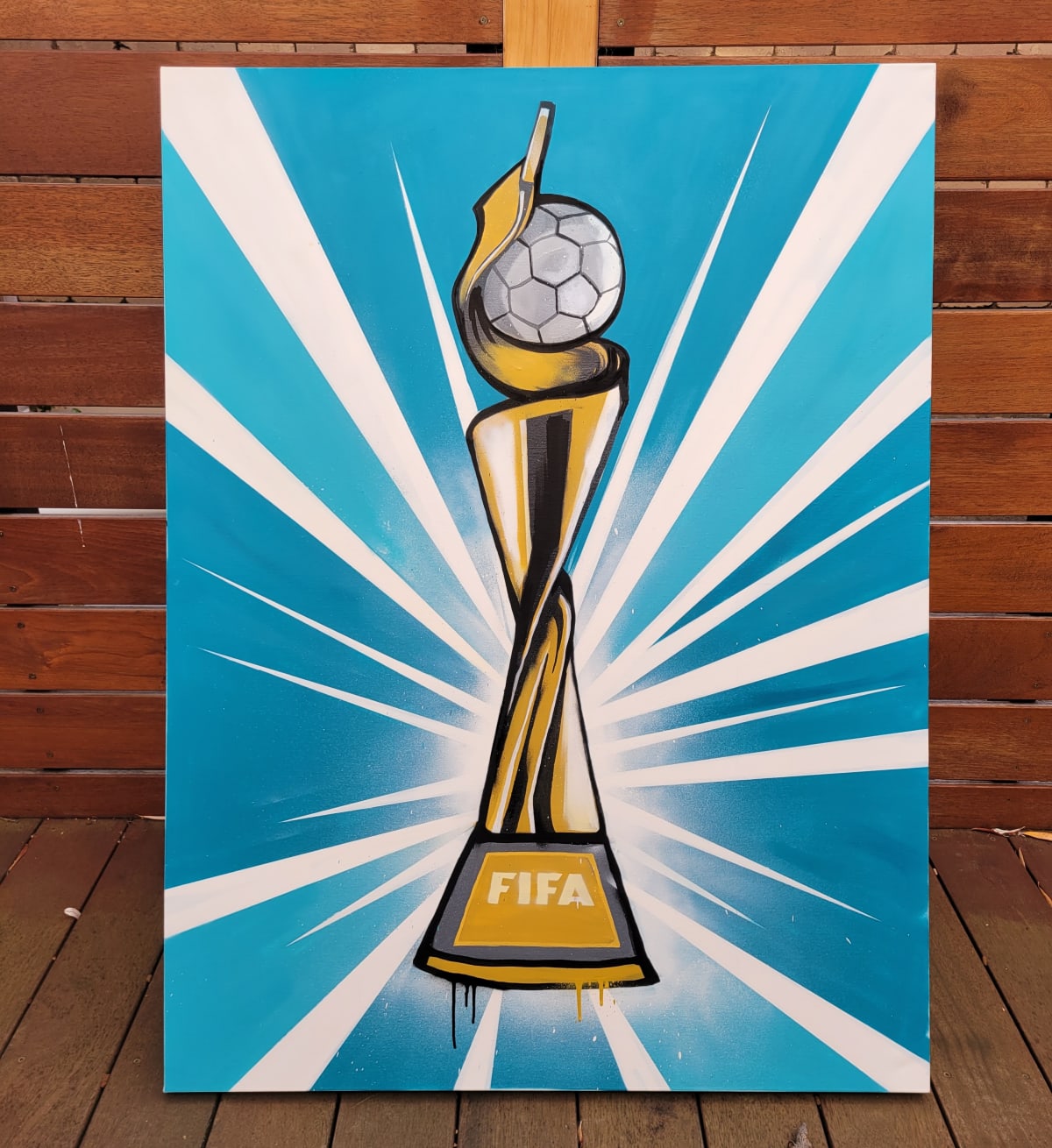
Hannah Wilkinson, athlete and artist, believes the Football Ferns could have created World Cup history by keeping their shape. And she tells Suzanne McFadden about the shape the women’s game is left in, and how she's giving back to NZ.
With the benefit of three weeks’ away from the football field, Hannah Wilkinson knows the single thing she’d change that could have seen the Football Ferns go further in the FIFA Women’s World Cup.
Shape.
“Honestly I wish we had stayed in our shape – the shape we played against Norway,” says the sole goal-scorer in the Football Ferns’ campaign.
“I feel we would have got through.”
The Ferns played a 4-4-2 counterattacking formation in their historic opening victory against the Norwegians, successfully putting the ball behind Norway’s fullbacks for New Zealand’s two attackers - Wilkinson and Ferns’ revelation Jacqui Hand. It paid off with a goal (their only goal of the tournament).
In the two pool games that followed - which would be their final two matches - coach Jitka Klimkova switched to a 4-3-3 system (if you're a Ted Lasso fan, you’ll recognise it as part of the Total Football philosophy, and relies on a lone striker up front).
“I’m not sure why the coach changed it. I have no idea,” the 117-cap Wilkinson says. “It was just one of those things.”
READ MORE:
* Haere rā football - you stole my heart
* Hannah Wilkinson - from Kamo to the world
But Wilkinson, who returned home to Melbourne after the team disbanded, is trying not to dwell on the Ferns’ failure to finally make it through to the knockout stages. But it’s not easy.
“I know what we did was great, but we had visions of us going really far,” she says. “It’s something I’m still trying to get over now, and celebrate the small, great thing we did do. It’s pretty s*** we didn’t do it.”
But after her fourth Women’s World Cup, Wilkinson calls this Football Ferns side the best she’s played with on the world stage – and at 31, she’s not ready to give up on the team yet.
“We got a taste of it, and we’re ready to keep going. [Katie] Bowen and I were talking afterwards that we can’t just stop here, we have to keep going. So we have that in our heads now,” she says, as the Football Ferns work through a review of their World Cup performance.

Wilkinson is back in Auckland this week to complete an under-wraps community project (soon to be revealed, she says).
She downed tools to talk to LockerRoom about the influence a former Football Ferns star had on their sole victory, the impact the Matilda’s success will have on our football, what NZ Football need to do immediately to continue the World Cup momentum, and her latest work of art to benefit the people of Hawkes Bay, whose lives were devastated by Cyclone Gabrielle.
LockerRoom: From being on the inside then watching from the outside, what did you make of this World Cup?
Wilkinson: It was a really good final. Just what a final should be, though I thought England would be better.
I knew the US wouldn’t go far, I didn’t rate them at all after we played them earlier in the year; I thought Japan would have done better; and Germany going out early was a shock. But a World Cup is always unpredictable, whether it’s the women or men.
With the most teams the World Cup has ever had, we’re starting to see talent outside Europe and the US. Instead of the same old top dog organisations, you’re seeing the globalisation of the game and how the talent is now spread far and wide.
LR: As your fourth World Cup, how did it rate?
HW: It was the best one, definitely. The home crowd was electrifying.
It’s so good to see the improvement, the new generation of women’s football. The game has sped up a phenomenal amount. That’s why people are interested – it’s actually quite comparable to watching the men’s game in some points. People didn’t really understand that until it was forced upon their eyes.
The ball speed is amazing. And the one-touch passing. That’s how New Zealand scored, one-touch passing all the way down the field.
LR: How did the ‘national hero’ tag sit with you after that goal and first-ever victory?
HW: It’s awesome! I love that. But I think I was just the cherry on top of a beautiful cake. It was a team win; we did that together. It was one of the most team-created goals – it was just my touch at the end, in the right place at the right time. That’s what forwards are supposed to do.
LR: Do you want to continue playing international football?
HW: Yeah, I like this group a lot. This player group was exceptional. It’s really hard to adapt when you’ve got such a different generation to work with, but I think we had the leadership to be open to that. Eventually - it was a rocky road for a while – but we broke down a lot of barriers and really managed to have a collective goal to win and move forward.

LR: Are you excited by the youth coming through the Football Ferns?
HW: Absolutely. If we’d gone further than we did, you would have seen a lot more of our talented young players. The nature of the tournament is that players just can’t last, and we had players who were bouncing and ready to go, who I think deserved more time in the games we had. If we’d moved through, you would have seen them for sure.
LR: What does NZ Football need to do now to capitalise on the success of this tournament, and continue the momentum?
HW: I think they really need to look at the success of this group and what worked. And what really worked was us spending a lot of time together – a lot more than we’ve ever had before. A solid three-month camp. That’s the luxury all those top, consistently successful teams have – consistent time together.
I hope that investment continues. You have to be a group for a long time to find out what works. We genuinely have tours where we have two days to get ready for a game, then go and play. It’s completely different when you’re prepared.
I think after this World Cup, they’d be insane not to organise more internationals to play here. I’d like to think New Zealanders really want to see us play again. We need to keep that buzz going. Because rugby is always there ready to take the stage.
LR: What about rumours of a new Auckland team to play in the A-League – having two Kiwi teams in Australia must help, too?
HW: That would be awesome – it’s well overdue. I think you’ll find some extremely good players coming through there. That will be the way not to just keep those performances going, but to make them better. Everyone is already buzzing for the start of the A-League season after the Matildas’ success. People want to keep watching women’s football. There’s so much talent, salary caps are increasing, there’s a lot more investment going into the league, and it’s only going to get better.
Women’s football is hopefully about to skyrocket - as long as that investment and support keeps coming.
LR: On the Matildas, how much influence will their unprecedented run to the World Cup semis have on New Zealand football?
HW: They’ve been setting the benchmark for us for years. The way they work, the way they’ve demanded a lot - they’ve had a lot of player-led activism on their own behalf to get the support, which I really admire. And it just goes to show what happens when you actually treat players like real professionals – like you would your men’s sides. I think NZ Football could definitely take a look. I like to think our success at this World Cup – or at least the one small thing we did well – shows we need to keep investing. And as players, we should be getting more.

LR: You’re auctioning your painting of the World Cup trophy. How did you decide who the proceeds would go to?
HW: Optus Sport in Australia reached out to me – they wanted to send a camera crew to capture me painting a big picture of the trophy. I didn’t know how it was going to turn out - I’d never done aerosol on canvas before. But it looks cool, and with the attention on the World Cup, it was an opportunity to do something useful.
I racked my brain about auctioning it and who to donate the money to. Before the World Cup we played friendlies against Italy and Vietnam in Napier. And [former Football Fern] Kristy Hill came in as a consultant to educate us more on Aotearoa and connect us more with the land and our community.
She did amazing stuff with us - at Matariki, we learned a beautiful waiata. I actually think Kristy played an enormous part in connecting us as a group, and an enormous role in our win.
She led us to a community outreach for a couple of days in Napier and we learned about the devastation of Cyclone Gabrielle. They’re still struggling, still rebuilding and in need of our support. So I thought, okay, let’s do something about it.
(All proceeds from the winning bid on the Trade Me auction will go to the Hawkes Bay mayoral relief fund).







